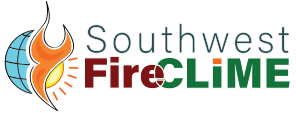
Resource Catalog
Document
We examined the effects of three early season (spring) prescribed fires on burn severity patterns of summer wildfires that occurred 1-3 years post-treatment in a mixed conifer forest in central Idaho. Wildfire and prescribed fire burn severities were estimated as the difference in normalized burn ratio (dNBR) using Landsat imagery. We used GIS derived vegetation, topography, and treatment variables to generate models predicting the wildfire burn severity of 1286-5500 30-m pixels within and around treated areas. We found that wildfire severity was significantly lower in treated areas than in untreated areas and significantly lower than the potential wildfire severity of the treated areas had treatments not been implemented. At the pixel level, wildfire severity was best predicted by an interaction between prescribed fire severity, topographic moisture, heat load, and pre-fire vegetation volume. Prescribed fire severity and vegetation volume were the most influential predictors. Prescribed fire severity, and its influence on wildfire severity, was highest in relatively warm and dry locations, which were able to burn under spring conditions. In contrast, wildfire severity peaked in cooler, more mesic locations that dried later in the summer and supported greater vegetation volume. We found considerable evidence that prescribed fires have landscape-level influences within treatment boundaries; most notable was an interaction between distance from the prescribed fire perimeter and distance from treated patch edges, which explained up to 66% of the variation in wildfire severity. Early season prescribed fires may not directly target the locations most at risk of high severity wildfire, but proximity of these areas to treated patches and the discontinuity of fuels following treatment may influence wildfire severity and explain how even low severity treatments can be effective management tools in fire-prone landscapes.
Cataloging Information
- burn severity
- coniferous forests
- crown fires
- dNBR - differenced (or delta) Normalized Burn Ratio
- Douglas-fir
- fire intensity
- fire management
- fire size
- forest management
- GIS - geographic information system
- grasslands
- heat
- Idaho
- ladder fuels
- LANDFIRE
- landscape context
- landscape ecology
- landscape-context
- mixed conifer forest
- national forests
- NPMR - nonparametric multiplicative regression
- overstory
- Pinus contorta
- ponderosa pine
- Pseudotsuga menziesii
- rate of spread
- remote sensing
- season of fire
- shrublands
- sloping terrain
- soil moisture
- surface fuels
- wildfires

This bibliographic record was either created or modified by Tall Timbers and is provided without charge to promote research and education in Fire Ecology. The E.V. Komarek Fire Ecology Database is the intellectual property of Tall Timbers.
